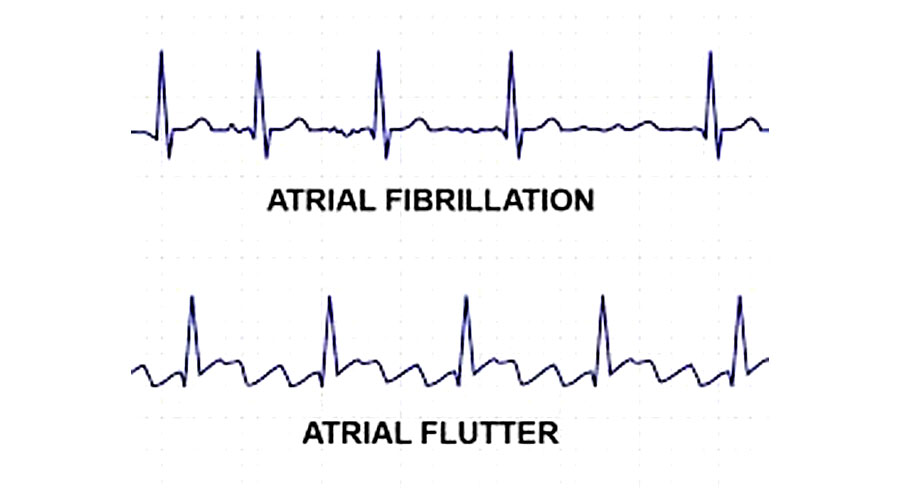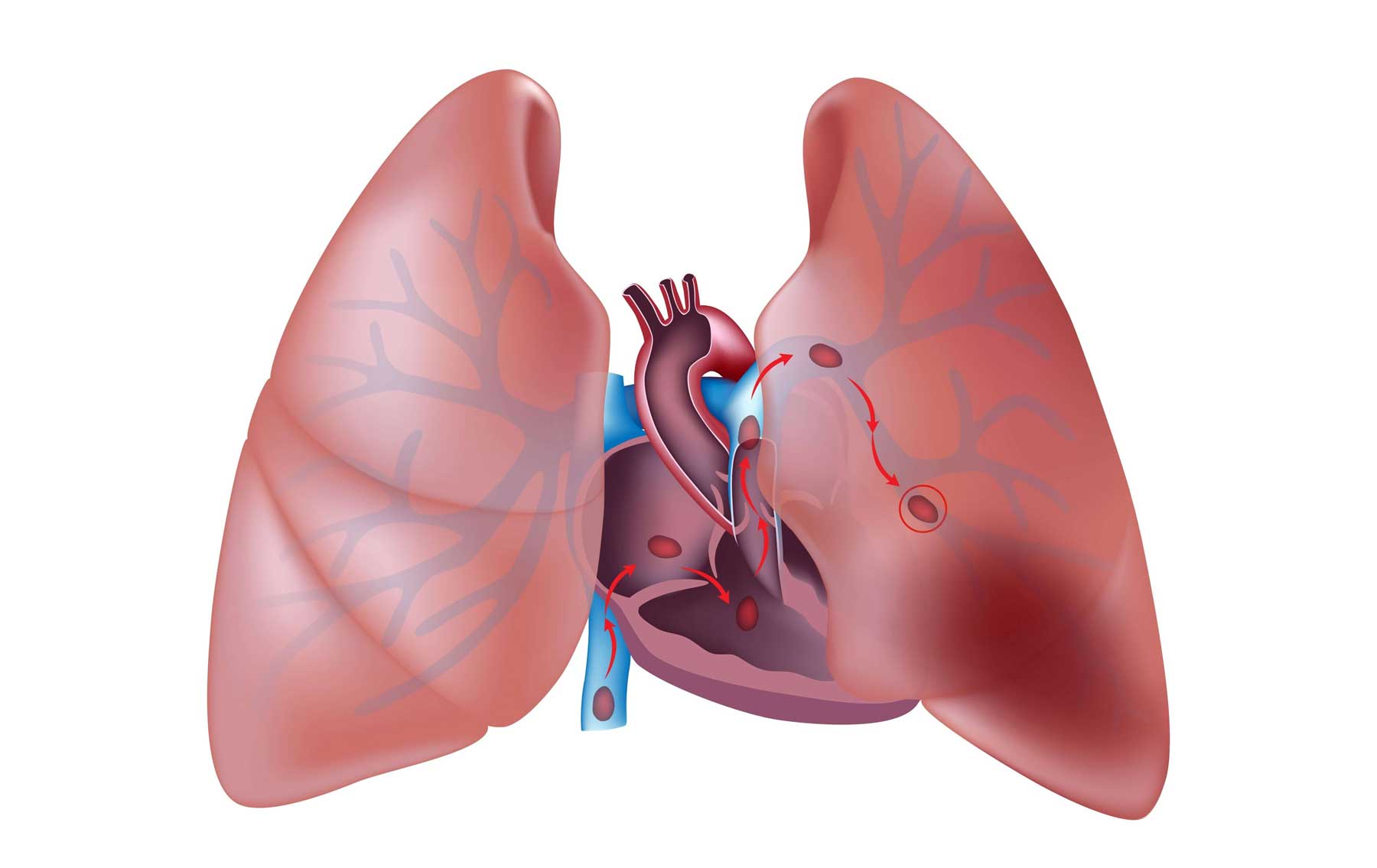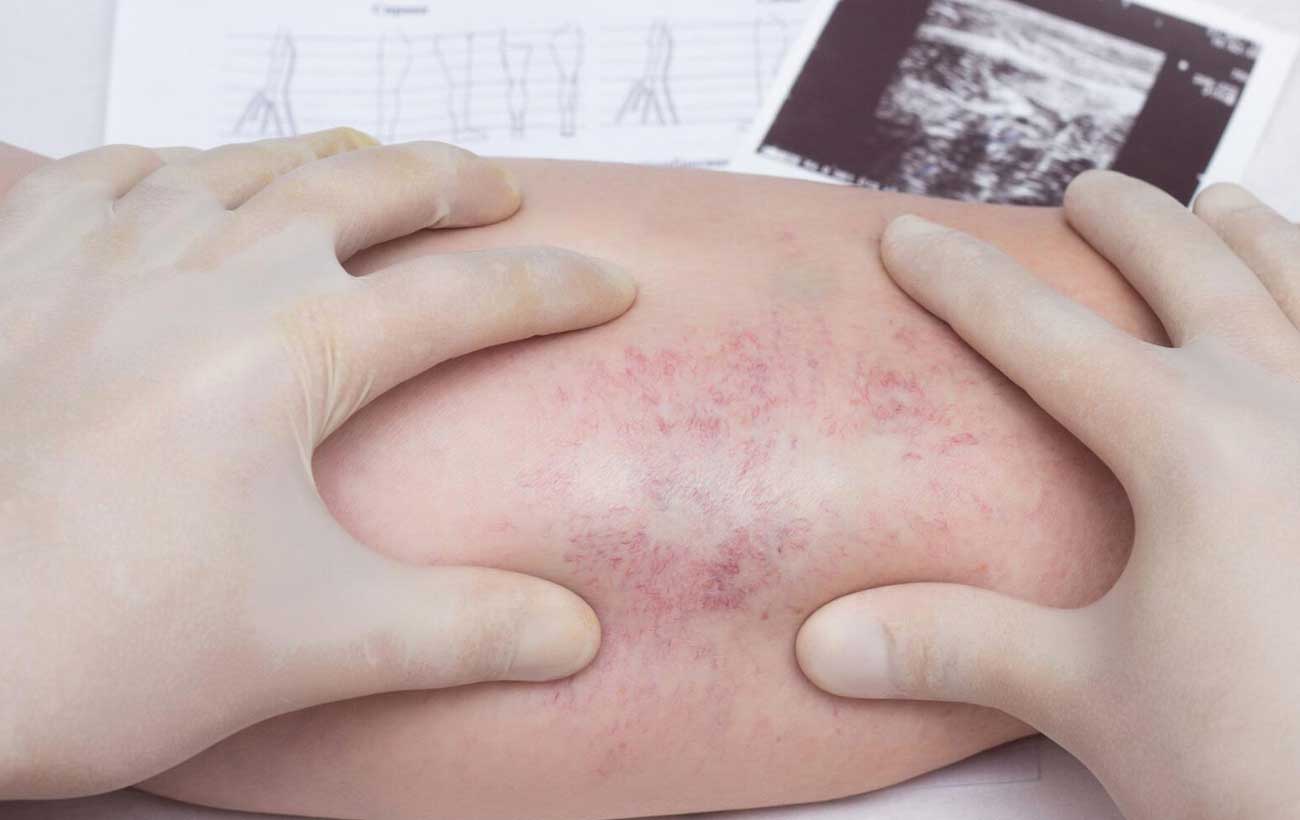Deep Vein Thrombosis Thrombosis is the formation of a blood clot (thrombus), which can partially…

Atrial Fibrillation and Flutter
In atrial fibrillation and flutter, the atria (the two upper chambers of the heart) contract (beat) irregularly and are not synchronized with the contractions (beating) of the ventricles (the two lower, pumping chambers of the heart). These uncoordinated heartbeats impair the heart’s ability to pump blood to the tissues.
Atrial flutter is similar to atrial fibrillation, except that in atrial flutter the muscles contract more regularly and at a somewhat slower rate. Both fibrillation and flutter tend to come and go, alternating with periods of normal heart rhythm.
Atrial fibrillation and flutter are usually the result of heart disease. The fibrillation or flutter can also be caused by an overactive thyroid gland, high fever, or excessive consumption of alcohol. Any disease that causes heart failure and enlargement of the right or left atrium can cause atrial fibrillation and flutter. In about 10 percent of cases, especially among older people, the condition has no obvious cause. People who have atrial fibrillation or flutter have an increased risk of embolism, seizures, heart failure, or stroke.
Symptoms
Atrial fibrillation and flutter often do not cause symptoms. When symptoms occur, they can include palpitations (heartbeats that you’re aware of), weakness, dizziness, angina (chest pain), or fainting. Some people also have symptoms of heart failure such as shortness of breath or fatigue. If you have symptoms of atrial fibrillation or flutter, see your doctor right away.
Treatments
Treatment for atrial fibrillation or flutter usually depends on the underlying cause of the problem. The doctor will probably recommend lifestyle changes such as eating a heart-healthy diet; cutting back on sodium, caffeine, and alcohol; exercising regularly; losing weight if you are overweight; quitting smoking if you smoke; and managing stress.
Doctors frequently prescribe digitalis drugs to help improve the efficiency of the heart by slowing the contractions of the ventricles. The doctor may prescribe beta blockers to improve the efficiency of the ventricles by slowing the electrical impulses from the sinoatrial node (the heart’s natural pacemaker). Antiarrhythmic drugs can help return the heart rhythm to normal. The doctor may also prescribe an anticoagulant drug to help prevent blood clots from forming.
If your heart is basically healthy, or if the underlying cause of atrial fibrillation or flutter persists despite treatment, your doctor may recommend a treatment called cardioversion. In this procedure, the doctor administers an electrical shock to your heart while you are under mild anesthesia. Cardioversion is frequently successful in restoring normal heart rhythm.




